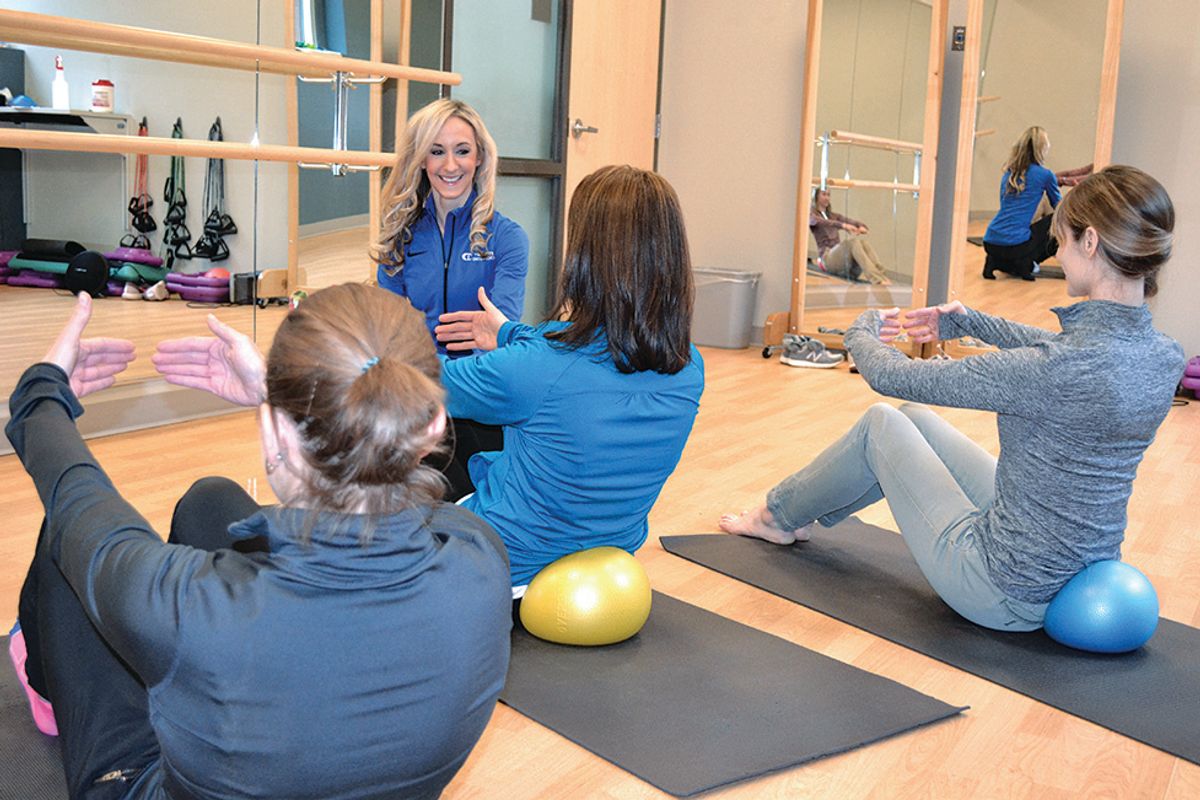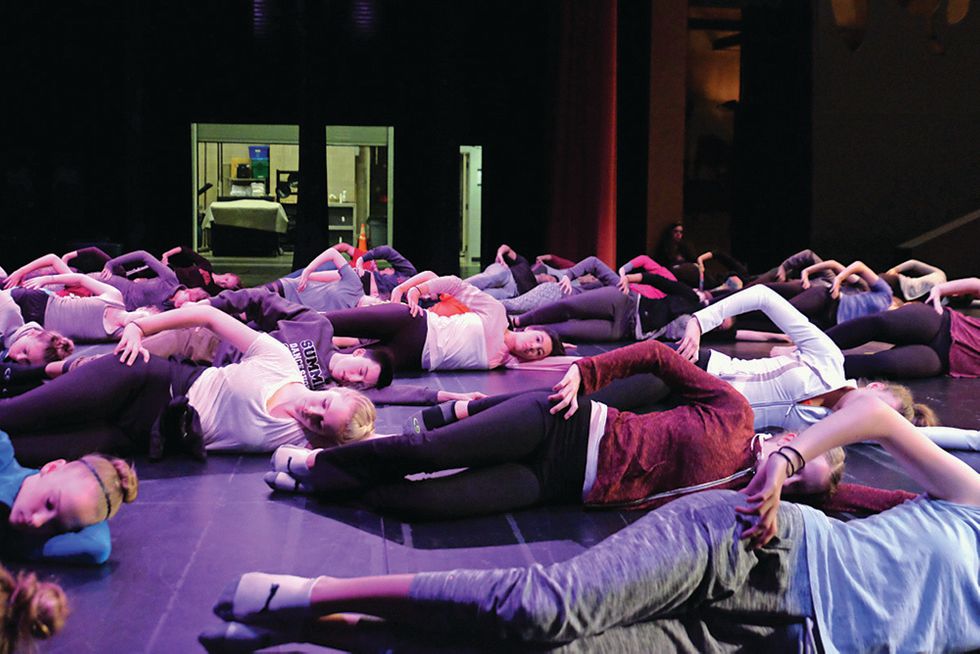
After a long tennis match or a basketball game, elite athletes often head straight to the locker room and hit the exercise bike. On first thought, this might seem to be overtraining, but in fact, they are pedaling as a way to cool down properly.
“All of our blood vessels get dilated and blood goes out to muscles when we are doing cardiovascular work,” says Meredith Butulis, a physical therapist specializing in dance medicine. “The blood goes mostly to the leg muscles, and blood pooling there is a real phenomenon. If your blood doesn’t get back to the heart and brain, you can pass out.”
She goes on to explain there are two ways to recover from an intense workout: actively, using a low-intensity movement to gradually bring the heart rate down, or passively, with no activity at all. The latter requires little explanation—how many times have you seen a dancer do a run-through and follow it up by sitting down on the side of the studio in a static stretch? But for many reasons, including the real possibility of blood pooling that Butulis describes, a passive recovery is not the best choice for dancers.
While cycling at a moderate, flat-road pace is a great option for actively recovering, it’s likely not practical for dancers. Yet there are many other ways to actively recover from a class, rehearsal or performance. The benefits go beyond cardiovascular health: Resetting the body in this way can help reduce soreness, restore the parasympathetic nervous system and, ultimately, enhance performance and prevent injuries. Plus, the principles of active recovery are flexible and can be adapted to a dancer’s needs during or at the end of a long day.
Active Recovery in 10 Minutes
“The goal of an active recovery is to gradually bring your heart rate back under 100,” says Butulis. “You can do it in just 10 minutes, moving slowly or easily and trying to keep head above heart.”
For anyone over the age of 10, a normal resting heart rate is between 60 and 100 beats per minute. Pre-professional dancers, like athletes, may be closer to 60 bpm or lower. When you are moving full-out long enough to feel your breathing get heavier or more difficult, you are headed toward your maximum heart rate zone or anaerobic threshold. Heart rate zones are age-dependent, and the general formula for your maximum heart rate is 220 bpm minus your age. According to Butulis, time spent getting back to under 100, where you are able to breathe and speak with more ease, can be the most important 10 minutes of a training routine. “This is the main opportunity that you have to prevent injury, get rid of chronic stress and pain, and find new potentials.”
While most of us assume soreness is due to the buildup of lactic acid, Butulis and other professionals point to hydrogen ions as the real problem. “An active recovery can clear the hydrogen ions out, so they don’t settle in your muscles and create that burn,” says Butulis. Plus, following up strenuous work with an easy flow of movement can be a boon for your students’ mind–body connection, helping them to calm down while also giving them the space to meditate or visualize their goals.

Photo courtesy of Twin Cities Orthopedics
Dancers can use downtime to work muscles on their personal corrective-exercise list.
Building an Active Recovery Inside the Rehearsal Day
During the rehearsal day or even in the midst of a class, there are sometimes longer breaks between dancing. Building an active recovery into those routine breaks can help dancers stay warm, while also giving them a methodical way to work on muscle imbalances and develop endurance without overtraining.
“You don’t want to jump into an allegro variation and realize that your feet are frozen,” says Butulis. “This is a great opportunity for dancers to work on their corrective exercises and muscle imbalances. The goal is not to fatigue or exhaust, but to work for a slow duration.”
Instead of just plopping into the splits between run-throughs, dancers can spend 10 minutes bringing the heart rate down with the strengthening circuits that are already in rotation.
Cooling down in this methodical way, using more anaerobic exercise, can also keep dancers ready for the next time they are needed. Butulis recommends using this time on the sidelines to use muscles that are not getting worked in the choreography of the day or that are on a personal corrective-exercise list.
Try This Three-Day Progression
Monday “Do 10 repetitions of something at the beginning of every minute,” she says. Pilates abdominal exercises, TheraBand routines, small weights and planks of all kinds are good options to choose from. Work slowly, concentrating on the breath and on proper technique.
Tuesday Focus on rolling out tight muscles and dynamically lengthening them using yoga-style stretches that take you fluidly and continuously through positions.
Wednesday Stay warm with a low-speed burpee, torso rotations with a ball or band, or exercises from a genre that is different from most of your training hours. “Take care not to move too fast,” says Butulis. “This is about getting the heart rate to normal and the breathing re-centered while building some slow endurance and a cardio base to be ready for when it is time for you to dance again.”
As the week progresses, repeat this progression beginning with corrective exercises.
At the End of the Day or Class
While some classes naturally have an active recovery built in (think révérence at the end of ballet class), it can be tempting to shorten or cut this component entirely when time is running out. But Butulis insists it is worth keeping in there, that it is just a matter of getting creative and making it align with the movement goals.
“You could spend five minutes at the end of class asking your students to blow up a balloon,” she says. “It will force dancers to exhale and get their breathing back. Or you could direct a slow-movement improvisation, asking students to explore weeds and flowers.”
The key is to keep any prompts and cueing aimed at slow movement. Any static stretching should be saved for after this active recovery. And if dancers are exerting right up until the clock runs out, encourage them to take an easy walk outside or even around the studio as a way to decompress and prepare both the mind and body for another training day.



